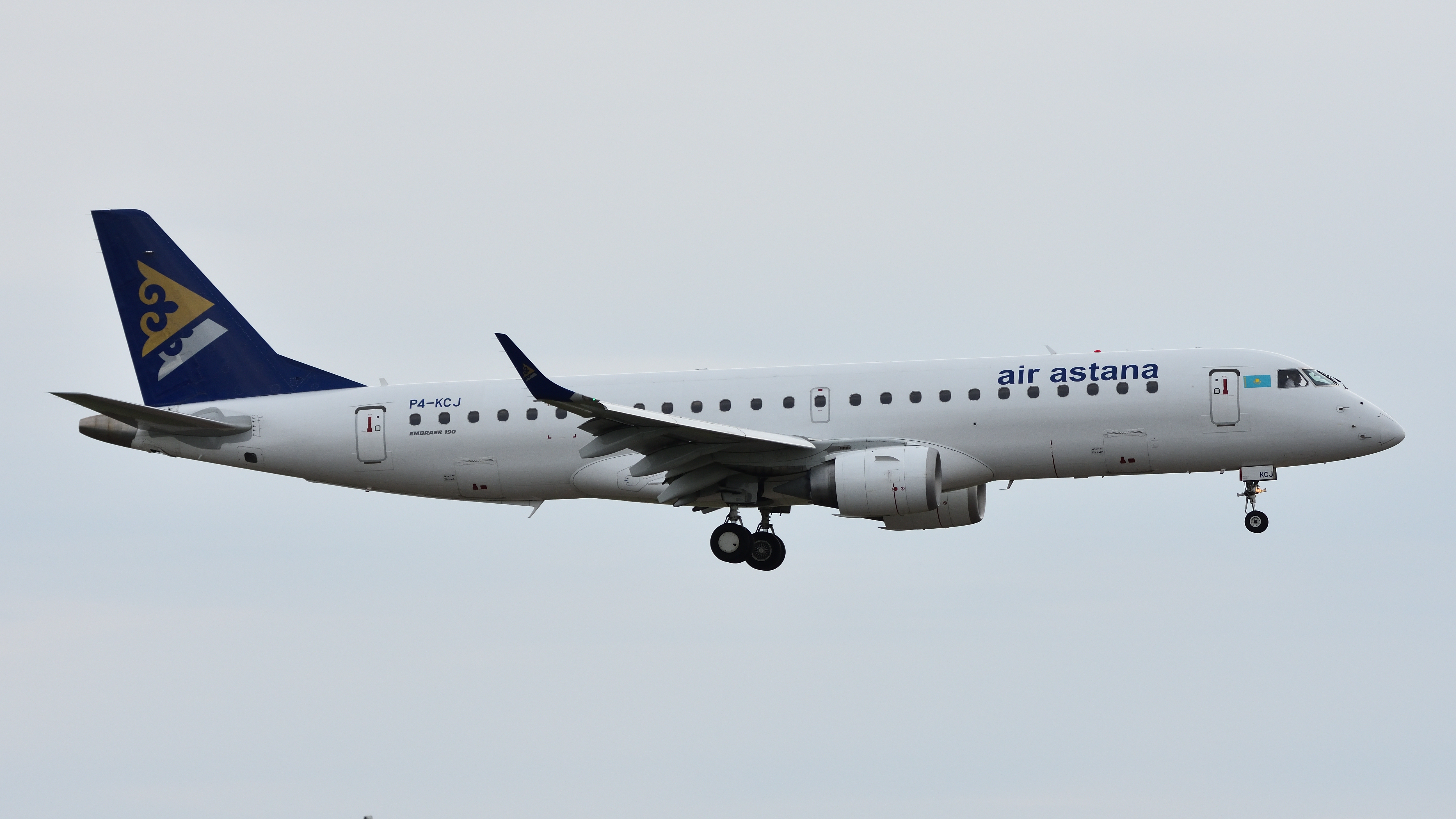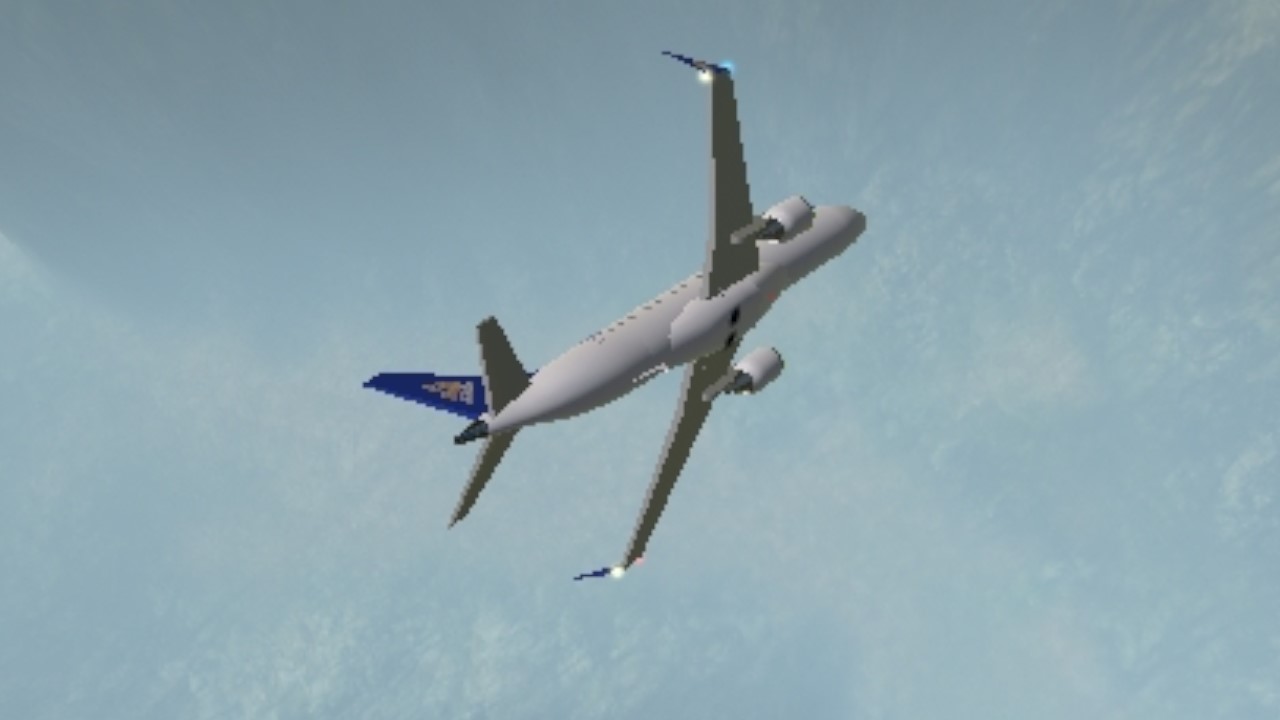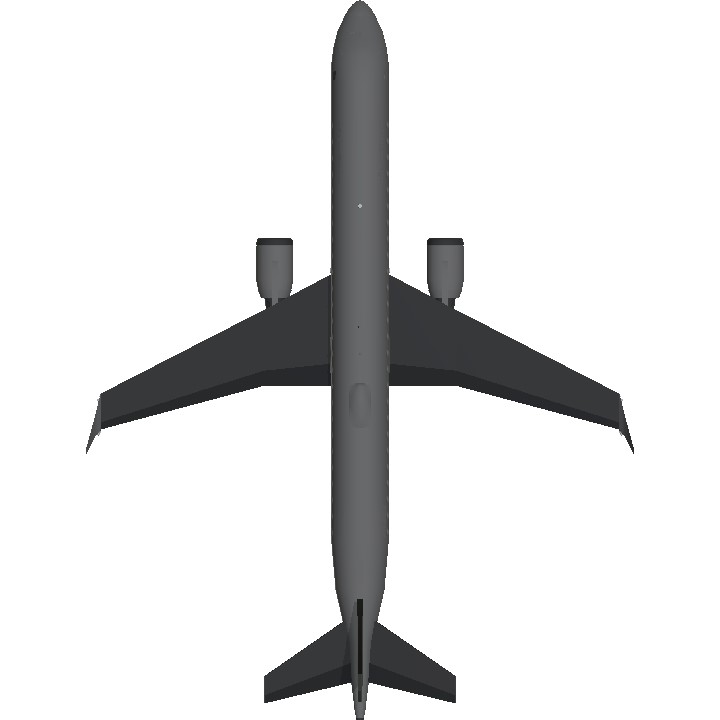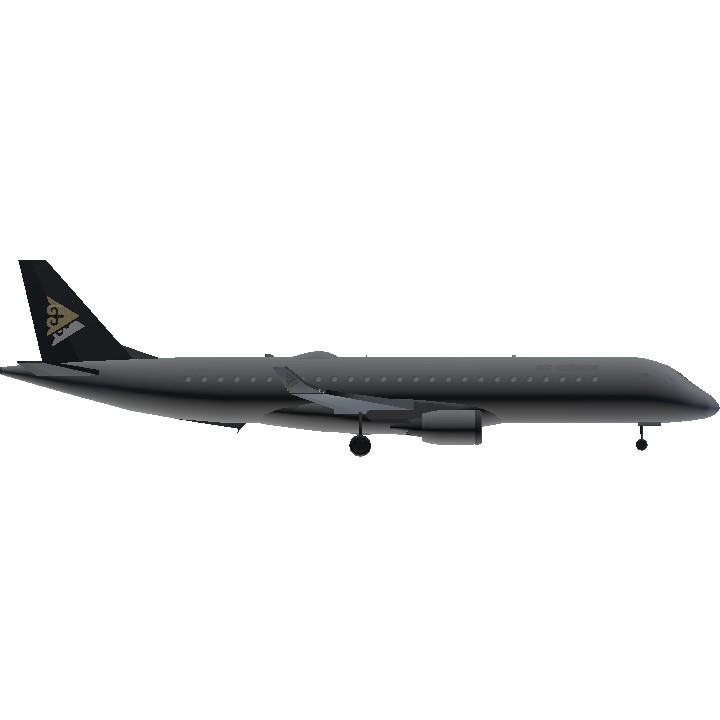Embraer E-Jet family
The Embraer E-Jet family is a series of four-abreast, narrow-body, short- to medium-range, twin-engined jet airliners designed and produced by Brazilian aerospace manufacturer Embraer.

Embraer 190 operated by JetBlue
The E-Jet was designed as a complement to the preceding ERJ family, Embraer's first jet-powered regional jet. Designed to carry between 66 and 124 passengers, it was larger than any prior aircraft built by the company. The project's existence was revealed in early 1997 and was formally introduced at the Paris Air Show two years later. On 19 February 2002, the first prototype E-Jet conducted its maiden flight; later that year, quantity production of the type commenced. In early March 2004, the first E170 deliveries were made to LOT Polish Airlines. Larger versions of the aircraft, the E190 and E195, debuted later in 2004, while a slightly stretched version of the E170 was introduced in mid-2005 as the E175.
The E-Jet series has been a commercial success primarily due to its ability to efficiently serve lower-demand routes while offering many of the same amenities and features of larger jets. Initial teething issues were quickly overcome and Embraer rapidly expanded product support for better global coverage. The E-Jet family is commonly used by both mainline and regional airlines around the world and has become particularly popular with regional airlines in the United States. It has also served as the basis for the Embraer Lineage 1000 business jet. During the 2010s, Embraer developed a second generation, the E-Jet E2 family, with more fuel-efficient engines. However, as of 2023, the first generation E175 remains in production, to fulfill demand from regional airlines in the United States, which cannot use the newer generation due to scope clause restrictions.
Air Astana Flight 1388
Air Astana Flight 1388 was a repositioning flight from Lisbon to Almaty, with a refueling stopover at Minsk. On 11 November 2018, shortly after takeoff, it suffered severe control issues. After 90 minutes it landed safely at Beja Airbase, with no fatalities.

P4-KCJ, the Air Astana Embraer E-190 involved, six months before the incident
Aircraft and crew
P4-KCJ, the incident aircraft, was an Embraer ERJ-190LR operated by Air Astana of Kazakhstan. The aircraft was delivered from Embraer to the airline in December 2013. Prior to the incident it had accumulated a total of 13,152 flight hours.
The plane was flown by Captain Vyacheslav Aushev (40); First officer Bauyrzhan Karasholakov (32); and First officer in jumpseat Sergey Sokolov (26). Three engineers travelled as passengers.
Maintenance
On 2 October 2018 the aircraft arrived at Alverca Air Base to undergo heavy maintenance at an OGMA maintenance facility. The maintenance consisted of accomplishing several service bulletins. On 9 October the overhaul of aileron cables was initiated. The first service bulletin consisted of replacing pulleys and structural supports of the cables. The second one consisted of replacing the stainless steel cables with carbon steel cables. The cables were also lubricated.
On October 26 during operational tests, a warning message (FLT CTR NO DISPATCH) alerted the maintenance crew that the aircraft was unfit for flight due to control system problems. The warning occurred again on 31 October. The troubleshooting lasted until 11 November, the date of the incident.
Flight
The aircraft took off at 13:31, with the crew failing to detect the ailerons' anomaly during the operational check procedures. Visibility was limited—between 2,000–3,000 metres (2.0–3.0 km; 1.2–1.9 mi). Shortly after take-off, the pilots noticed severe control issues. The pilots tried to turn on the autopilot, but it failed to engage. At 13:37, the crew requested a climb to FL100 (about 10,000 feet or 3,000 metres) and an immediate return to Alverca, reporting flight control problems. At several instances, the plane suffered complete loss of control, flipping over and diving sharply, placing stress on the airframe. The crew requested a heading to the sea so they could ditch if it became inevitable, but they struggled to comply with any headings given by ATC due to their difficulty controlling the aircraft.
The crew discussed the options available to them, with the first officer in the jumpseat coordinating with the technicians on board as passengers to discover the cause of the upsets and establish an action plan. Despite no warnings indicating issues with normal mode, the crew activated the direct mode for flight controls which disconnects the FCM (flight control module) from the controls. This considerably increased controllability of the pitch and yaw-axes, but control of the roll axis was still limited with the plane rolling abnormally as the spoilers would actuate and upset the aircraft with too much input. The crew flew the plane east, hoping to find better weather conditions. Two F-16s, led by Lt. Col. Nuno "Buzzer" Monteiro da Silva, from the Portuguese Air Force took off from Monte Real Air Base to escort the aircraft to Beja Airbase. After two go-arounds due to unstable approaches, the active first officer changed places with the other one in the jumpseat. On the final approach, the plane was bound for runway 19R but eventually landed on 19L due to the aircraft drifting on the approach. Video footage shows the aircraft nearly skidded off the runway after touching down on the runway.
 Footage of KC1388 emergency landing at Beja Airbase
Footage of KC1388 emergency landing at Beja Airbase
All on board were shaken, but the only injury was one passenger who suffered a leg injury. The hull was deformed and the leading edges of the wing were wrinkled. Some parts of the aircraft suffered loads greater than they were designed for. The aircraft was written off and subsequently scrapped.
Investigation
The investigation revealed that the aileron cables were installed incorrectly. This caused reversal of aileron controls. Since the roll control surfaces include spoilers, which weren't affected by the mistake, the situation couldn't have been handled with just reversing inputs.
The investigation blamed the manufacturer of the airplane for unsatisfactory maintenance instructions, the supervising authorities for lack of oversight over the maintenance crew, who lacked the skill to perform the heavy maintenance, and the flight crew for failing to notice the condition during pre-flight control checks.
In popular culture
The incident was featured in season 23, episode 5, of the Canadian documentary series Mayday, titled "Control Catastrophe".
Notes
the airplane following "Artificial intelligence"
watch this documentary
Specifications
General Characteristics
- Predecessor Embraer ERJ-190LR (LOT Polish Airlines)
- Created On Android
- Wingspan 147.1ft (44.8m)
- Length 193.4ft (59.0m)
- Height 53.5ft (16.3m)
- Empty Weight 13,058lbs (5,923kg)
- Loaded Weight 30,616lbs (13,887kg)
Performance
- Power/Weight Ratio 4.404
- Wing Loading 12.9lbs/ft2 (62.8kg/m2)
- Wing Area 2,380.8ft2 (221.2m2)
- Drag Points 16267
Parts
- Number of Parts 79
- Control Surfaces 9
- Performance Cost 473




